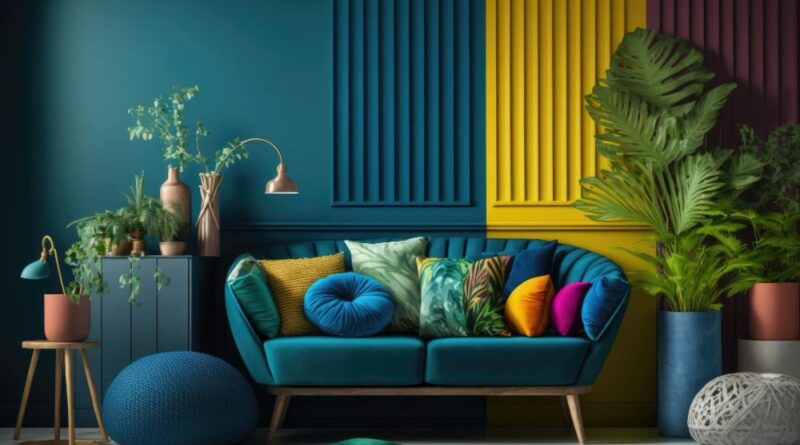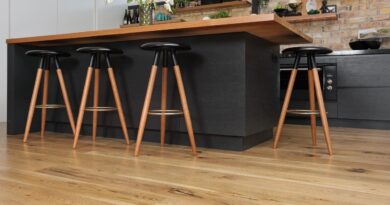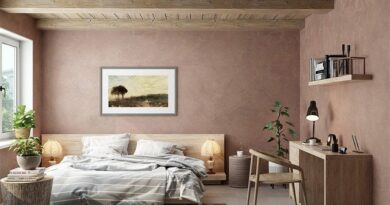Finding Balance: How to Choose the Right Art for a Modern Home
Art has always been more than decoration: it’s a visual expression of how a space feels. In modern interiors, where light, texture, and proportion take the lead, the right wall art brings cohesion to every surface. Whether you live in a minimalist apartment or an open-plan home, curating your walls thoughtfully can transform the atmosphere from plain to polished. The key lies in understanding three principles: finish, style, and scale.
Setting the Foundation with Texture and Finish
Canvas is a quiet hero of contemporary design. It softens light, reduces glare, and enhances natural pigments under both daylight and lamplight. The subtle matte texture sits comfortably beside organic materials—linen, oak, brushed brass, or stone—adding visual warmth without distraction. It’s a finish that feels refined yet approachable, ideal for modern interiors seeking balance between comfort and clarity.
If you’re starting to curate your space, explore modern canvas wall art guide selections that showcase how format and finish influence the tone of a room. Gallery-wrapped edges keep profiles clean, while ready-to-hang builds make installation simple. To establish harmony, pull one color from your textiles—perhaps a thread from a throw pillow or a tone in your rug—and echo it in your artwork. Keep frames consistent (black, oak, or white) for visual rhythm, and hang pieces so the center rests around 145 cm from the floor. That level aligns with natural sightlines, helping art feel grounded yet integrated.
Defining Style Direction Through Composition
Modern design isn’t about empty space—it’s about intentional space. Every line and tone has a reason to exist. This philosophy translates directly into art selection: choose works that reinforce your interior’s architecture and palette. Pair two core neutrals with a single accent hue to guide consistency, and think of shape and texture as your silent palette companions.
Browsing abstract modern art on canvas helps refine this vision. Abstracts bring fluidity and movement to rooms dominated by structure; black-and-white compositions simplify and sharpen; geometric patterns create a bridge between architecture and art. In smaller rooms, opt for designs with generous negative space and light tones to keep the mood open. In industrial or loft settings, choose stronger contrasts or angular forms that play with raw materials like concrete or metal.
The goal is visual alignment. Hang art edges in line with architectural features—doorframes, window tops, or shelves—for a composed look. If you’re arranging multiple canvases, connect them through a shared motif: a color echo, a mirrored line, or a continuation of horizon. This continuity makes the arrangement feel intentional, not improvised, while preserving the calm balance that modern décor celebrates.
Creating Impact Through Scale and Placement
Even the most perfectly chosen piece can look uncertain if it’s the wrong size. Scale gives a room its sense of completeness—the quiet confidence that says “finished.” Above a sofa or bed, your artwork should measure roughly two-thirds to three-quarters the width of the furniture beneath it. This proportion ensures visual equilibrium without overpowering the surrounding space.
To establish presence, invest in large wall art. A single oversized canvas above key furniture instantly defines a zone and draws the eye. In open-plan layouts, one bold piece can anchor separate functions—living, dining, or workspace—without the need for partitions. When building gallery walls, maintain 5–8 cm spacing between frames for rhythm and breathing room.
Orientation also shifts perception:
- Landscape enlarges horizontal flow, ideal for wide sofas or sideboards.
- Portrait adds vertical energy and height, perfect for hallways or narrow walls.
- Square maintains balance and symmetry, especially in minimalist layouts.
Think of large-scale pieces as design punctuation marks—they emphasize, conclude, and define. Too many small works can fragment a wall, while one strong statement unifies it. Step back occasionally while arranging to check proportion and sightlines; what feels balanced close-up may appear skewed across a room.
Connecting Rooms Through Flow
Beyond individual walls, consider how your art communicates from one room to the next. Repetition builds continuity: matching frame tones, recurring materials, or a color accent that travels between spaces. A soft beige or graphite note in one piece might reappear in a line drawing down the hallway, creating a subtle thread that guides the eye and connects moments of stillness.
Lighting completes this sense of flow. Directional spotlights or warm LEDs enhance pigment and texture, while indirect illumination reduces glare. Daylight, too, should be managed carefully—sheer curtains can diffuse brightness without dimming vibrancy. Vary artwork heights slightly between adjoining rooms so each space retains individuality within the larger visual rhythm.
The Finishing Touch
Cohesive interiors share an unspoken calm: every surface, tone, and line seems to know its place. Art is the unifier that ties those choices together, reinforcing proportion, palette, and purpose. Begin with texture and finish—canvas for softness and depth. Define your style direction through abstracts, monochromes, or geometry that echo your architecture. Then master scale and placement—art that’s proportionate to your furniture and confident in its presence.
Whether your goal is serenity or statement, curating wall art for a modern home isn’t about collecting objects—it’s about shaping mood. The right balance of finish, composition, and proportion transforms walls into thoughtful architecture. With care and clarity, art becomes not just what you hang, but how you live.




